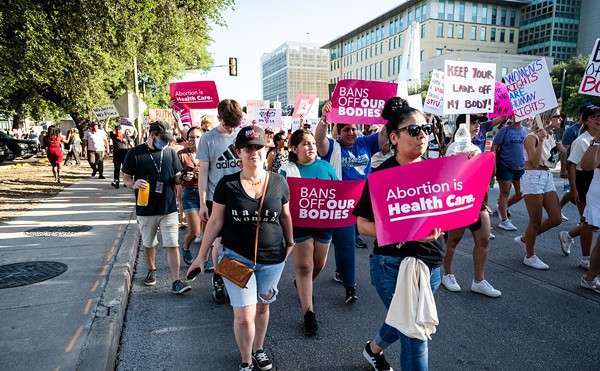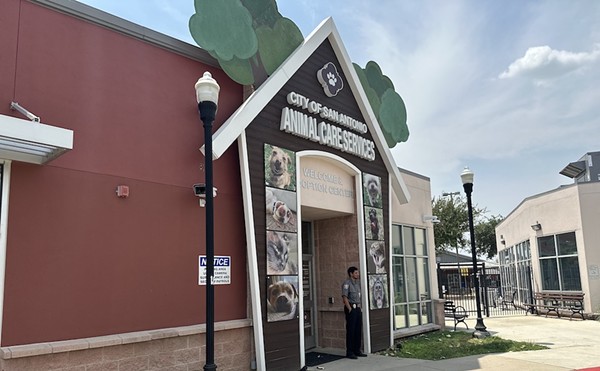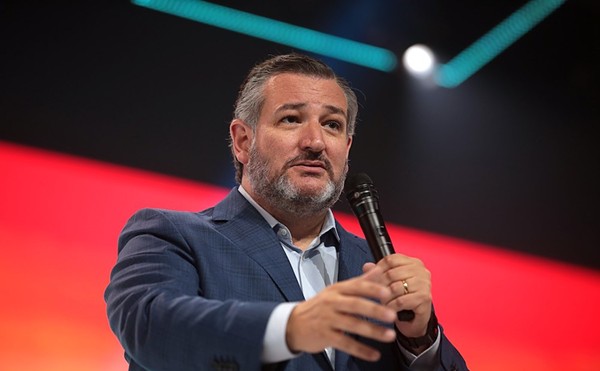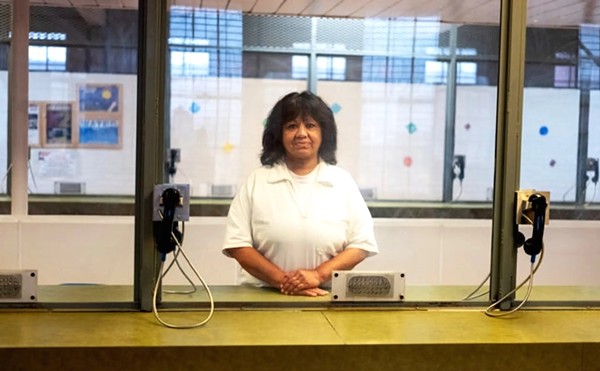The Golden Goose, like the recession we’re not in and the peace dividend promised an undeclared war ago, is a wraith. Here today, in Timbuktu tomorrow. How do we know when we’ve starved or overburdened it? When it might disappear over the westerly horizon with the last drop of pure spring water sliding down its gullet?
Surely that’s the fear that haunts those tourism-invested businesspeople who have spoken so candidly with the Current the past few months — off the record — about the proposed Visitor Tax extension that voters will face in the May 10 election. If you continue to tax the second-biggest driver of the local economy (only recently, and by a hair, backseat to the biomedical industry) without buying it a new … venue now and then, will the vacationing families from Texas’s farther reaches and nearby states reset the GPS for Arkansas?
“Venue Tax,” in fact, is the recently outmoded shorthand for the local rainmaking device the state legislature enabled in 1997 — with assistance, tweaking, and advocacy from San Antonio’s delegation — and that Bexar County made quick use of to fund construction of the AT&T Center sports arena. Texas Local Government Code, Title 10, Chapter 334: Sports and Community Venues, lets cities and counties tax car and hotel rentals, among other commodities, to build a range of facilities, from sports arenas to “a tourist development area along an inland waterway.” But that snoozer of a caption doesn’t drive home the main selling point in this, the home of C.A. Stubbs, the Homeowner Taxpayer Association, and a 160,000-square-foot haven for grackles and stray dogs: Politicians, abetted by the locals, can tap a distant, disfranchised citizenry for the stuff of legacy. Yes, Virginia, there is a free lunch.
Thanks to higher-than-projected revenues from the 1.75-percent hotel-occupancy tax and 5-percent motor-vehicle-rental tax passed in 1999, Bexar County will pay off the arena ahead of schedule — yet another advantage in the campaign to leverage the current tax into a long-term generator of public amenities. Of course, the AT&T Center, grafted as it is on the rump of I-35 North, hard up on the still underdeveloped East Side, might be a bad poster child were the Spurs not flaunting four championship rings on behalf of a wide array of modern conveniences, from cars to cable.
That location, far from downtown and isolated by industry and poverty, was the sticking point for SA’s official tourism representatives last time around. “... bookings are way down `for 2003` and we hear complaints from hotel executives throughout the city,” Henry Feldman, then president of La Mansion del Rio and the hotel association, told the Express-News in October 2002. The new arena was needed, he said, but placing it so far from downtown made it almost useless to the tourism industry.
Another year, another tax proposal, and similar concerns from business owners who can’t help but notice that none of the money is earmarked for attractions that regularly top “reasons to visit SA” lists. “I am extremely disappointed that the golden goose of tourism is completely neglected,” said one hotelier who declined to speak on the record.
This time, though, the San Antonio Area Tourism Council, chaired by Feldman, is endorsing all four proposals on the ballot:
• $125 million to detail the pedestrian walkways and other features along the San Antonio River.
• $80 million to build “amateur and youth” soccer fields, football fields, baseball diamonds, etc.
• $100 million for unspecified upgrades to the AT&T Center and improvements to the rodeo grounds.
• $110 million to turn the Municipal Auditorium into an acoustically fabulous home for the symphony, the opera, and other performing-arts agencies, plus $6 million for the historic Alameda Theatre and $5 million for the Briscoe Western Art Museum.
The difference in 2008, says Schilo’s and Casa Rio owner Bill Lyons, is that the city’s tourism leadership realized that the politicians were going to extend the tax anyway, and they might as well get in a project that directly impacts their business — namely the river improvements, which will create a 13-mile green belt running from Brackenridge Park through downtown to the historic missions on the South Side. (He also thinks that the Municipal Auditorium is a good location for the PAC: “San Antonio is pretty safe and pretty
walkable.”)
“I don’t think anybody in the city could really feel these endeavors are bad,” says Lyons of the whole package, but he wonders, “Is it really going to benefit tourism?”
Lyons, a board member at the Tourism Council, mentions several projects not included on the ballot that could use the funds and that, arguably, are more likely to be appreciated by the source of the money: an Alamodome renovation,
Convention Center expansion, and repairs and improvements to the heavily trafficked River Bend area of the River Walk.
“What has been such an economic generator for San Antonio are our visitors,” says Lyons. He worries that taxing tourists to pay for projects that they aren’t likely to experience sends them the wrong message. From his perspective, tourists provide the perfect economic relationship, givers who don’t take much in return. “So, can we keep that good, clean source of revenue for our city?”
But advocates for the Visitor Tax — which includes the ACT for San Antonio PAC — argue that increased hotel and car-rental taxes don’t discourage tourism. From 1996 to 2006, the hospitality industry’s economic impact nearly doubled, reports the Tourism Council, and visitor numbers (including daytrippers) grew 22 percent between 2004 and 2006.
Enterprise Rent-a-Car, which made local news when it issued and then withdrew a threat to finance a campaign opposing the local tax extension, is not riding the booster train. A 2006 study commissioned by Enterprise from independent researchers from the Urban Institute and the Brookings Institution found that a car-rental tax in Kansas City, Missouri, caused consumers to seek out less-expensive rental options and to rent cars for fewer total days, resulting in an overall loss in state sales-tax revenue.
Enterprise spokseperson Laura Bryant says visitor taxes boil down to Boston Tea Party issues.
“It’s unfortunate that more people haven’t understood that singling out a single group of customers is fundamentally unfair,” she says. “It’s offensive to anybody who believes in the democratic system.”
Within minutes of our telephone conversation, Bryant emails the Current articles about a failed — and ignominiously so — proposal to tax coffee drinks in Starbucks’ hometown. “OK — you tell me ... “ her email asks, “what’s the difference between a ‘latte tax’ and a ‘car rental excise tax?’”
But rather than fight them on the ground, says Bryant, Enterprise will focus its efforts at the national level, where a proposed law filed in 2007 would limit state motor-vehicle taxes. The law would grandfather existing taxes, though, so if Enterprise and its like-minded colleagues in the car-rental industry are successful on Capitol Hill, this could be SA’s last chance to dip into those funds.
The Enterprise-commissioned study is no doubt getting play in that D.C. battle. Sin taxes make sense, write authors William Gale and Kim Rueben, because their stated aim is to discourage the vice, and if you pay for the next generation’s education while you’re at it, more’s the happiness. An environmental tax on pollution sources makes similar sense. But using car-rental taxes to fund tenuously related projects violates good tax policy, which spreads the cost of a public investment widely, thinly, and equitably among the beneficiaries.
Economic studies have repeatedly failed to support arena-booster claims that a new stadium will be an “economic engine,” argue Gale and Rueben, and without a broad economic impact to support a broad tax, sports arenas should be built by the home teams’ private owners and investors, “so that customers from one industry are not being coerced into subsidizing the profit margins of another.”
Alternatively, in Bexar County’s case, thanks to the language in Chapter 334, we could follow another of Gale and Rueben’s suggestions and ask the voters to pass the bill to another direct beneficiary — Spurs and
rodeo fans — with a ticket tax.
But that revenue source, says Bexar County Civil Division Chief Ed Schweninger, isn’t on the table, and wasn’t when the original tax was discussed and implemented. “We just simply made a conscious decision to charge visitors,” he said, “and we weren’t going to charge a ticket tax because a lot of locals were going to be using the facilities.”
Yet, it sort of makes sense, this Enterprise argument — even to a tax-and-spend liberal like me — and perhaps for this reason the proposed arena upgrades fared poorly in a leaked private poll reportedly commissioned by Enterprise.
Those poll numbers, published in part February 20 on the Current’s CurBlog, show a populace not so out-of-step with some tourist-industry concerns: firmly in favor of the river improvements, mostly pro the PAC plan, split on the amateur sports facilities, and super unexcited about the prospect of spending $100 million on the AT&T Center and rodeo grounds. (ACT claims that the results of a private poll conducted by the Spurs are much sunnier, but those numbers have not been made public.)
According to the leaked poll, the most popular reason for extending the tax among proponents is that the tourists, not locals, will pay it. And even without the boosters’ polling results, we can read something into ACT’s emphasis on “NO New Taxes” and the numerous pictures of kids playing sports in the campaign literature, which — and this despite the fact that he has nothing but praise for the City’s current leadership — galls Lyons just a bit. “`The Visitor Tax` is supposed to, number one, serve our visitors, and then, number two, we would hope that through that we’re also serving our community.” •
Think you’ve made up your mind? Not so fast! Read about the arts community’s reaction to the proposed PAC next week. Check out Joe Solis’s argument in the Say-town Lowdown, and watch for follow-up articles examining the merits of the individual ballot initiatives.
Planning to vote in the May 10 bond election?
April 3 is the voter-registration deadline. Register online and get more election info at bexar.org/elections/Registration/Register/register.html
________________________________________________
4 Phrases
... on the Visitor Tax extension
’Member that time you were stranded in the mountains of Guatemala, in the only cabin at the hot springs with a non-functioning tub, and while your boyfriend didn’t know how to say, “Our tap isn’t working. May we please move to another room?” (Nuestra llave de agua caliente no sirve. ¿Por favor, podramos cambiar de cuartos?), he did manage to crack up the manager by announcing “Tengo hombre” instead of “Tengo hambre” at breakfast? Good times.
If you’ve similarly failed to master bureacratese as spoken by the PR firms retained to convince the public of the worthiness of their grand schemes, keep this handy 4 Phrases on the Visitor Tax in your pocket till the May 10 municipal and county election.
• If approved, the four Visitor Tax proposals would extend the 1.75-percent hotel tax and a 5-percent car-rental tax enacted in 1999 and used to build the Spurs’ home, the AT&T Center.
• The Visitor Tax extension proposal is split into four initiatives:
$125 million for the SA River improvements already underway but in need of more funds
$80 million for amateur and youth soccer fields, a swimming pool, and other sports facilities
$100 million for the AT&T Center and the adjacent rodeo grounds
$110 million to remodel the Muncipal Auditorium into a home for the Symphony, the Opera, and other groups, and to help fund the Alameda and the Briscoe Western Art Museum
• If some but not all of the measures pass, the tax rate would remain the same, but would be retired earlier (unless, of course, you voters approve a new extension)
• While we used to call it the Venue Tax, after the 1997 state law that authorized it, it’s been rebranded to remind voters that most of the burden falls on out-of-towners (except that 50-plus percent of local car rentals, of course).
— Elaine Wolff

















